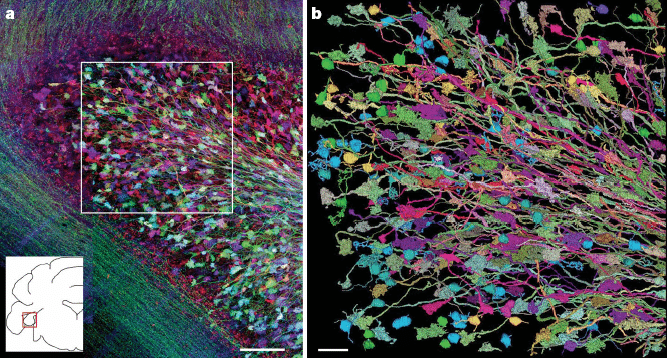Of Interest
Our 12 Favorite Science Podcasts
Whether you’re doing a quick Miniprep or labeling hundreds of PCR tubes, listening to science podcasts can help keep you sane, entertained, and informed! With so many podcasts out there, we’ve pulled together this list of twelve great options: 1. 60-Second Science (1 – 2 minutes, updated weekdays) This Scientific American podcast offers quick news about…
Read MoreMysterious miRNAs: An Introduction to MicroRNAs
mRNA, miRNA, siRNA, tRNA, rRNA! Just what do all these RNAs do? Most biology graduates will have heard a good deal about mRNAs, tRNAs and rRNAs since these are vital players in protein synthesis. For siRNAs there has been a lot of focus within drug discovery and biomedical research over the last decade, but there…
Read MorepUC18 – Probably the Best High-Copy plasmid in the World!
Today I would like to introduce you to pUC18, a plasmid most noted for its high copy number. In the first article in this series, we talked about how origins of replication (ori) control plasmid replication and copy number. To learn about this, we focused on the pBR22 ori and the role of Rop protein in…
Read MoreArticle Series: E.coli Plasmid Origins of Replication: The Origin
The literature is bursting at the seams with information about plasmids, sequences, origins of replication and more, and it can be overwhelming to sift through everything (at least for me!) when all you want is to find out a simple fact about your plasmid of choice!! This series of 3 articles aims to take a…
Read MoreApoptosis Gone Wrong: Cell Death’s Role in Disease
Like yin and yang, apoptosis has a duality. While it is is a pathway used in the normal maintenance and development of tissues in healthy organisms it also had a dark side. As you can imagine, apoptosis is a tightly regulated process – controlled by the integration of multiple pro- and anti-apoptotic signals. Ultimately the induction…
Read MoreLife or Death? Apoptosis in Healthy Organisms
Everybody has to die at some point. But fortunately, the death of a cell does not mean the end of the organism, at least for us metazoans. Indeed, controlled cell death a.k.a apoptosis, or programmed cell death, is an integral part of the biology of all organisms, from nematodes on up. Apoptosis is central to…
Read MoreReady to commercialise your research? Bioincubators are worth considering
Finding adequate sources of funding is the primary challenge of just about any startup company, and biotechnology is no different. In fact, the regulatory, scientific and logistical requirements of making a new drug or device could easily be the most challenging of any industry. In addition, the global recession of 2007-2009 (combined with austerity measures…
Read MoreZebrafish: Making Development Transparent
With the recent development of transparent Zebrafish, allowing scientists to directly view its internal organs, and observe processes like tumor metastasis and blood production after bone-marrow transplant, it seems appropriate to describe Zebrafish as a model organism.
Read MoreWorms: Models of Development
Continuing with the recent theme on model organisms, there is the nematode (roundworm) Caenorhabditis elegans. This organisms is particularly useful owing to the fact that it has very defined development patterns involving fixed numbers of cells, and it can be rapidly assayed for abnormalities. Further, strains are cheap to breed and can be frozen. When…
Read MoreXenopus as a Model for Early Development
Another popular model organism is the African Clawed Frog, Xenopus laevis, which is extremely useful for studying development and cellular physiology, owing to its particularly large and easy manipulable oocytes and embryo.
Read MoreDictyostelium as a Model
As noted in the previous post on Model Organisms, Dictyostelium discoideum is a popular model for studying fundamental aspects of cell-cell communication and chemotaxis. This is a soil-living social amoeba grows as separate, independent cells that interact to form multicellular structures when challenged by adverse conditions such as starvation. Up to 100,000 cells signal each…
Read MoreModel Organisms in Biomedical Research
The term “model organism” is often used in research, to describe species that are extensively studied to understand particular biological phenomena. We say “model,” because there is usually the expectation that discoveries made in the organism model will be representative of related taxonomic groups. In particular, model organisms are widely used to explore potential causes…
Read MorePlease, don’t take Bitesize Bio “on Faith”
Science is an endlessly fascinating, challenging, and intellectually-satisfying endeavor. So it saddens me any time that I see someone mistakingly make claims about taking science on faith. This isn’t the forum for taking on religion – if you want that, more of my thoughts on that can be found at Migrations. I have one request…
Read MoreFluorescent Neurons Over the Brainbow
Site-specific recombinases have, for the past 20 years, been one of the most powerful tools in studying the functions of all sorts of genes. Most widely used as the Cre/lox-based system for inserting or deleting genes in mice, transgenic analyses have told us volumes about animal development1. For instance, mouse genetic knockouts are routinely the…
Read More











